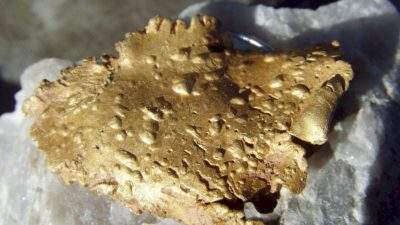
This drilling program was completed during December 2018 and was designed to test strong termite and soil gold anomalies (see September 21, 2018 press release). Significant amounts of saprolite-hosted gold mineralization was discovered in each of the two areas that were tested with the best results returned from the Mankouke area (see location map and cross-section). A summary of significant results is presented in Table 1.
HIGHLIGHTS
5.94 g/t gold over 14 metres (including 26.7 g/t gold over 2 metres)
8.68 g/t gold over 14 metres (including 41.5 g/t gold over 2 metres)
8.47 g/t gold over 18 metres (including 29.0 g/t gold over 4 metres)
4.98 g/t gold over 8 metres (including 16.6 g/t gold over 2 metres)
3.06 g/t gold over 8 metres (laterite-hosted)
2.71 g/t gold over 4 metres (laterite-hosted)
COMMENTARY
Greg Isenor, President and CEO of Roscan Gold stated that “this is an excellent new discovery with very good gold grades. The mineralized zone is open to depth and appears, from a limited amount of drilling, to extend to the next drill line located approximately 250 metres to the north, and hopefully beyond, along this large geochemical anomaly. We are extremely pleased that our approach to exploration in this area has again been successful. Additional drilling is part of an obvious next step.” This program is just starting, and we are encouraged by the indications that the apparent high-grade zone continues to depth.
DRILLING PROGRAM
The air core drilling was completed over five anomalies that were tested with seven lines of AC holes drilled across the target areas generally in an east-west direction and drilled at -50 degrees to the west and to a depth of 45 to 60 metres in a heel to toe fashion. These anomalies were identified by a sampling program that had covered only 20% of the total land package. Significant gold mineralization was intersected in two areas, in first pass air core holes, at Mankouke on drill lines 1 and 7 and at Moussala North on drill line 4 (see Figure 1 for general locations). Air Core drilling is used to sample unconsolidated ground and compressed air is used to remove the cuttings from the hole. During the Kandiole drilling program samples of 2 metres were collected. For each 2 metre intersection a 2 kilo sample was collected and sent to the laboratory. A check sample of approximately 5 kilograms was collected for possible future tests.
PLANS
Further drilling will be carried out to test the extent of the mineralization at depth and along strike to the north and south of the strongly mineralized zones. Additional gold-in-termite and termite anomalies zones remain to be tested. The soil and termite sampling has identified anomalous trends that are consistent with the regional trends. In addition, new termite mound sampling has been carried out over a significant part of the property that has not been covered before; results are pending.
Source: Company Press Release






